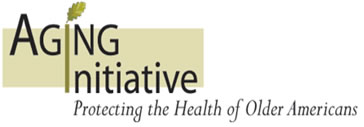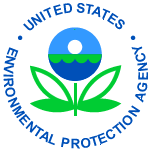About BHCAA
BHCAA
Building Healthy Communities for Active Aging National Recognition Program
 What is the National Recognition Program for Communities that Combine Smart Growth and Active Aging? The principal goal of the Building Healthy Communities for Active Aging Award program is to raise awareness across the nation about healthy synergies that can be achieved by communities combining Smart Growth and Active Aging concepts.
What is the National Recognition Program for Communities that Combine Smart Growth and Active Aging? The principal goal of the Building Healthy Communities for Active Aging Award program is to raise awareness across the nation about healthy synergies that can be achieved by communities combining Smart Growth and Active Aging concepts.
Awards will be presented to communities that demonstrate the best and most inclusive overall approach to implementing smart growth and active aging at the neighborhood, tribe, municipality, county, and/or regional levels.
Two types of awards will be made—the Commitment Award and the Achievement Award. The Commitment Award recognizes communities that have developed and begun to initiate a specific plan to implement smart growth and active aging principles. The Achievement Award will be given for overall excellence in building healthy communities for active aging.
Who can apply for an award? Applicants must be public-sector entities in the United States and coordinate with their local Area Agency on Aging. Public-sector entities include all levels of elected governments, from city councils to state legislatures and their subdivisions such as planning departments and other executive branch divisions. Applications are due September 12, 2008. Application, award guidelines and entry rules can be found here.
Are Other Organizations Involved? The U.S. EPA’s Aging Initiative is spearheading this multi-agency effort developed in partnership with:
- The President’s Council on Physical Fitness and Sports
- The Centers for Disease Control and Prevention (CDC)
- The National Council on Aging’s Center for Healthy Aging
- The National Blueprint Office
- Active for Life
Additionally, the Robert Woods Johnson Foundation, through its Active for Life program, is supporting a Healthy Communities for Active Aging Learning Network for participating communities and tribes, and the National Blueprint and the CDC Healthy Aging Research Network is providing technical assistance.
What is Smart Growth? Smart Growth is characterized by development patterns that create attractive, distinctive, walkable communities that give people of varying age, wealth, and physical ability a range of safe, affordable, convenient choices in where they live and how they get around. Growing smart also ensures that existing resources are used efficiently and that lands and buildings that shape communities are preserved.
Communities across the country are using creative strategies to develop in ways that preserve natural lands and critical environmental areas, protect water and air quality and reuse previously developed land. They conserve resources by reinvesting in existing infrastructure and reclaiming historic buildings. By designing neighborhoods to contain homes, shops, offices, parks, and other amenities, these communities are giving their residents and visitors the option of walking, bicycling, taking public transportation, or driving as they go about their business.
A range of different types of homes makes it possible for aging Americans to stay in their homes as they age, young people to afford their first homes and families, at all stages in between, to find a safe and attractive home they can afford. Through smart growth approaches that enhance neighborhoods and involve local citizens in development decisions, these communities are creating vibrant places to live, work, and play. The high quality of life in these communities makes them economically competitive, creates business opportunities, and improves the local tax base. Read more information about Smart Growth.
What is Active Aging? Active Aging takes place when older adults regularly participate in a variety of structured and unstructured physical activities. Communities can promote Active Aging by implementing a diverse array of accessible physical-activity programs, and helping to make more accessible self-directed physical-activity opportunities for those 50-plus. All of these opportunities should emphasize activities that increase endurance, strength, flexibility, and balance, while adhering to the principles of injury prevention. Self-directed activities include walking, biking, fitness trails and similar activities that are appropriate for participants at various levels of fitness and functional ability. For more information on Active Aging, please visit the websites of the Active for Life Program![]() , National Council on Aging’s Center for Healthy Aging
, National Council on Aging’s Center for Healthy Aging![]() and the National Blueprint
and the National Blueprint![]() .
.
Help Shape the Future for Communities and Older Adults

For more information on
the EPA Aging Initiative
![[logo] US EPA](https://webarchive.library.unt.edu/eot2008/20081107130820im_/http://www.epa.gov/epafiles/images/logo_epaseal.gif)